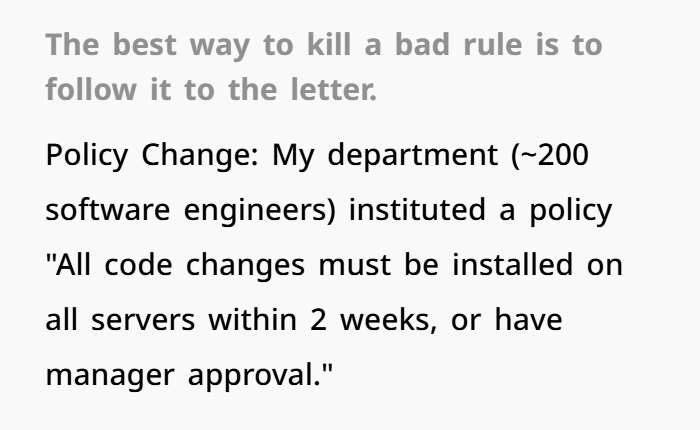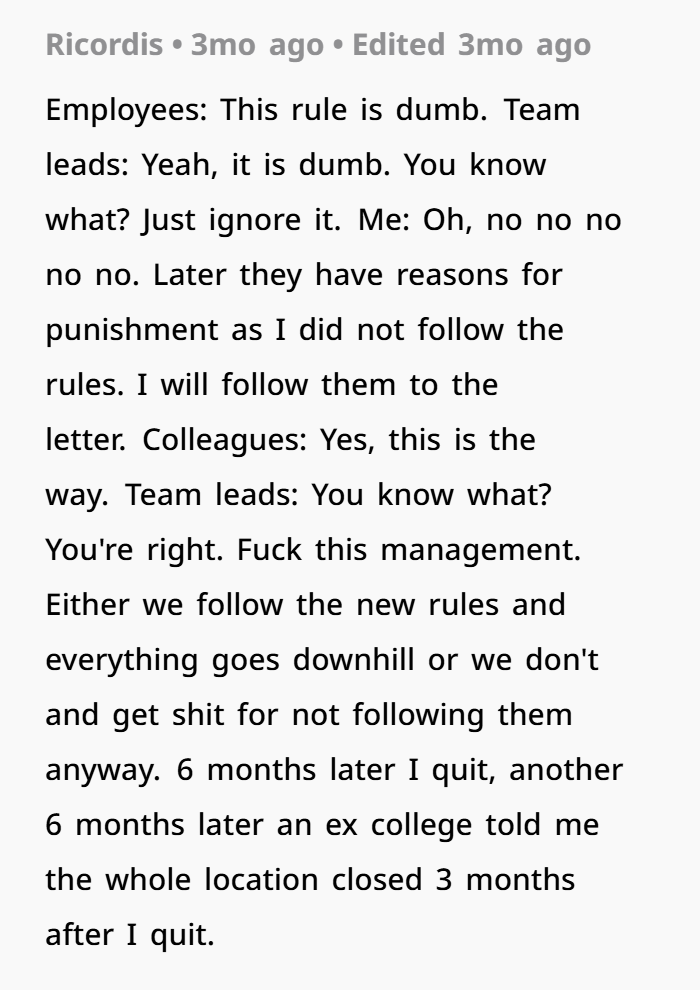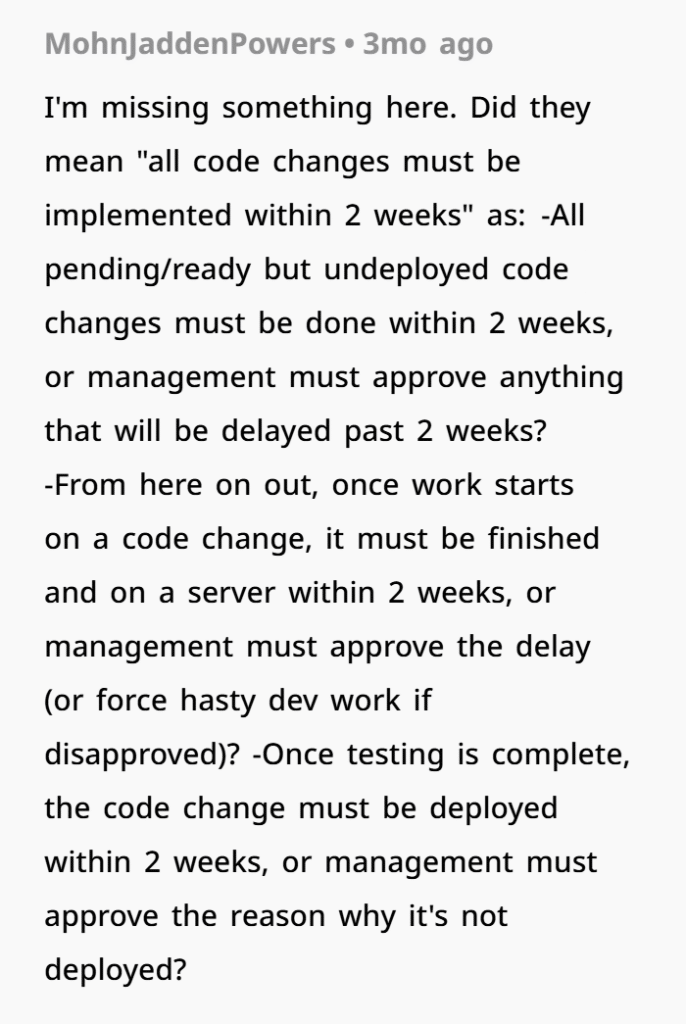When Following the Rules Breaks the System: A Tale of Malicious Compliance in Software Deployment

In a large software engineering department, a well-intentioned policy mandated that all code changes be deployed to every server within two weeks or receive managerial approval. While aiming to enhance consistency and reduce bugs, the policy overlooked the practical challenges of manual deployments across numerous servers. One engineer, recognizing the policy’s impracticality, adhered to it strictly, requiring managerial approval for each change. This approach highlighted the policy’s flaws, leading to its eventual abandonment and earning the engineer commendation for their commitment to quality.
Advertisement – Continue Reading Below
Software engineers often face rigid policies that end up hindering rather than helping their work

One employee shared how they received an exemplary performance review after using malicious compliance to successfully challenge and eliminate a flawed policy












The Power of Malicious Compliance in Software Deployment Policies
In the realm of software development, policies are often instituted with the intention of enhancing efficiency, ensuring security, and maintaining consistency. However, when such policies are implemented without a comprehensive understanding of the existing infrastructure and workflows, they can lead to unintended consequences. The narrative of enforcing a rigid deployment policy, only to have it systematically challenged through strict adherence, exemplifies the concept of “malicious compliance”—where following the rules to the letter exposes their impracticality.
Advertisement – Continue Reading Below
The Importance of Deployment Frequency

Deployment frequency, one of the four key metrics identified by the DevOps Research and Assessment (DORA) team, measures how often an organization successfully releases to production. High deployment frequency is associated with faster time-to-market, improved product quality, and increased customer satisfaction. Organizations that deploy frequently can respond more rapidly to user feedback and market changes, fostering a culture of continuous improvement.
However, achieving high deployment frequency requires streamlined processes, automation, and a culture that embraces change. When policies mandate deployments across all servers within a tight timeframe without the necessary infrastructure to support such actions, they can hinder rather than help progress.
The Pitfalls of Rigid Policies
Implementing policies without considering the operational realities can lead to several issues:
Advertisement – Continue Reading Below
- Operational Bottlenecks: Mandating deployments across numerous servers without automation can overwhelm teams, leading to delays and increased error rates.
- Reduced Morale: When teams are forced to comply with impractical policies, it can lead to frustration, decreased motivation, and potential burnout.
- Inefficient Use of Resources: Time and effort spent on manual deployments could be better utilized in developing features or improving system architecture.
- Resistance to Change: Overly rigid policies can stifle innovation and discourage teams from adopting more efficient practices.
In the case presented, the policy requiring all code changes to be installed on all servers within two weeks, without the support of automation, was not only impractical but also counterproductive.
Malicious Compliance as a Catalyst for Change
By adhering strictly to the policy and requiring managerial approval for every deviation, the engineer highlighted the policy’s flaws. This approach forced management to confront the inefficiencies and reconsider the policy’s viability. Such actions can serve as a powerful tool to instigate change, especially when direct feedback is ignored.

Documenting each instance of policy override provided tangible evidence of the policy’s shortcomings. When a critical project necessitated rapid changes, the accumulated data underscored the need for policy revision, leading to its eventual abandonment.
Advertisement – Continue Reading Below
Best Practices for Effective Policy Implementation
To avoid similar pitfalls, organizations should consider the following best practices:
- Collaborative Policy Development: Involve stakeholders from various departments to ensure policies are grounded in operational realities.
- Pilot Testing: Before full-scale implementation, test policies in controlled environments to identify potential issues.
- Feedback Mechanisms: Establish channels for continuous feedback to monitor the policy’s effectiveness and make necessary adjustments.
- Invest in Automation: Automate repetitive tasks to reduce manual errors and free up resources for more strategic initiatives.
- Regular Reviews: Periodically assess policies to ensure they remain relevant and effective in the face of evolving technologies and business needs.
People online widely agreed that the policy was poorly thought out, and the author offered even more insight into just how flawed it was






The story serves as a cautionary tale about the dangers of implementing policies without thorough consideration of their practical implications. While well-intentioned, such policies can hinder progress and demoralize teams if not grounded in operational feasibility. Malicious compliance, in this context, became a tool to expose inefficiencies and drive meaningful change. Organizations must strive for a balance between governance and flexibility, ensuring that policies serve to empower rather than constrain their teams.






